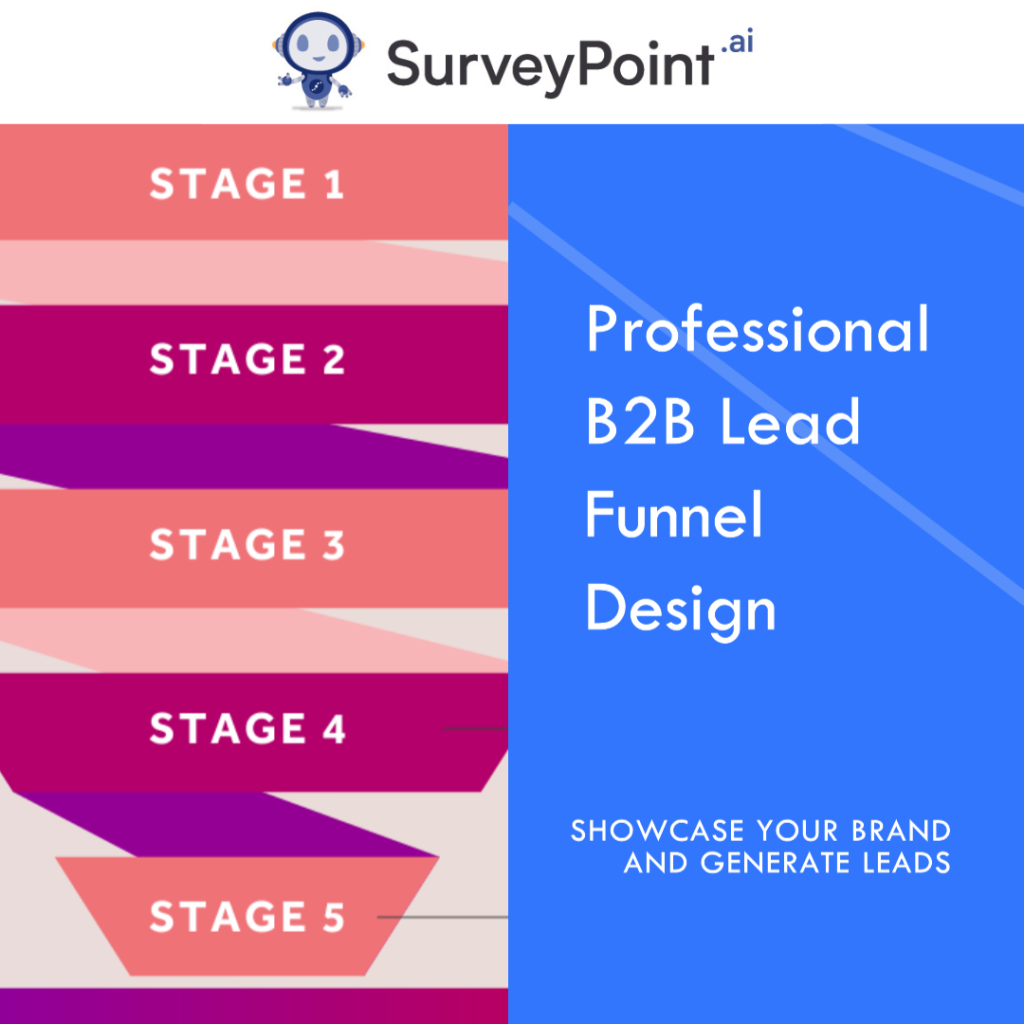In B2B marketing, mastering the art of lead generation and conversion is essential for business success. The B2B lead funnel is your roadmap to converting potential customers into loyal clients. In this 2000-word article, we’ll journey through the intricacies of B2B lead funnel strategy, explore optimization techniques, discover the automation tools to streamline the process and delve into the best practices that drive success. So, let’s sharpen our sales skills and unlock the potential of B2B lead funnels.

Understanding the B2B Lead Funnel
The B2B lead funnel is a framework that guides potential customers through a series of stages, from initial awareness to conversion. It’s a strategic tool designed to maximize the efficiency of your marketing and sales efforts. The core stages of the B2B lead funnel include:
- Awareness: At the top of the funnel, potential leads become aware of your brand, product, or service. This is the first step in attracting their attention.
- Interest: As potential leads express interest in your offerings, they move down the funnel. This stage involves nurturing their curiosity and building a connection.
- Consideration: In the consideration stage, leads evaluate your offerings and compare them with competitors. This is a critical phase where you need to provide valuable information and solutions.
- Intent: Leads in the intent stage are highly interested and ready to decide. It’s time to guide them towards conversion.
- Evaluation: The evaluation stage involves making a final decision. Leads may seek additional information or reassurance before making a purchase.
- Conversion: This is the ultimate goal of the lead funnel. Leads become customers by making a purchase or taking the desired action.
B2B Lead Funnel Optimization Techniques: Maximizing Conversion Rates
Optimizing your B2B lead funnel involves improving each stage to maximize the chances of conversion. Here are some fundamental techniques:
- Segmentation: Divide your leads into segments based on their interests, behaviors, and needs. This allows you to create tailored content and messages.
- Lead Scoring: Assign scores to leads based on their actions and behaviors. This helps prioritize high-quality leads for immediate attention.
- Content Personalization: Deliver content and messaging that’s relevant to each lead’s stage in the funnel. Personalization increases engagement and conversion rates.
- A/B Testing: Continuously test different elements of your funnel, such as landing pages, email subject lines, and calls to action (CTAs), to determine what works best.
- Multi-Channel Marketing: Reach your leads through various channels, including email, social media, content marketing, and paid advertising.
- Sales and Marketing Alignment: Ensure that your sales and marketing teams work closely together to provide a seamless experience for leads as they progress through the funnel.
- Lead Nurturing: Develop automated email sequences that nurture leads with valuable content, moving them closer to conversion.
Lead Funnel Automation Tools: Streamlining Your Efforts
Automation tools are invaluable in managing and optimizing B2B lead funnels. They streamline processes, save time, and improve lead management. Some essential lead funnel automation tools include:
- Customer Relationship Management (CRM) Software: CRM software, such as Salesforce, HubSpot, or Zoho CRM, helps you manage and track leads, interactions, and sales activities.
- Email Marketing Automation: Platforms like Mailchimp, Marketo, and Pardot allow you to automate email marketing campaigns, including lead nurturing.
- Marketing Automation Software: Tools like HubSpot and Marketo offer end-to-end marketing automation, from lead generation to nurturing and conversion.
- Lead Scoring Tools: Solutions like Leadfeeder and Act-On provide lead-scoring capabilities to help you identify and prioritize high-quality leads.
- Chatbots and Live Chat Software: Implementing chatbots like Drift or live chat software like Intercom can engage leads and capture valuable data.
- Analytics and Reporting Tools: Tools like Google Analytics, Kissmetrics, and Mixpanel help you analyze funnel performance and make data-driven decisions.
- Social Media Management Tools: Tools like Hootsuite and Buffer simplify social media management, which is crucial for top-of-funnel activities.
Sales Funnel vs. Lead Funnel: A Comparative Analysis
While sales funnels and lead funnels share similarities, they have distinct purposes and structures:
- Sales Funnel: A sales funnel focuses on the stages of converting leads into customers. It’s more transactional and primarily associated with the sales process.
- Lead Funnel: A lead funnel is broader in scope, encompassing the stages from initial awareness to conversion. It’s more about building relationships and nurturing leads.
- Customer Journey: A sales funnel emphasizes the latter stages of the customer journey, while a lead funnel covers the entire trip, from initial contact to conversion.
- Marketing vs. Sales: Sales funnels are often more closely associated with the sales team, whereas lead funnels have a marketing-driven approach.
- Lead Nurturing: A key component of lead funnels is lead nurturing, which involves building trust and engagement with leads over time.
Lead Generation Funnel Best Practices: A Roadmap to Success
Successful lead generation funnels are built on best practices that drive results. Here are some key strategies:
- Define Your Target Audience: Clearly define your ideal customer profile and target audience to tailor your lead generation efforts effectively.
- Create High-Quality Content: Develop valuable, informative, and engaging content that resonates with your target audience.
- Optimize Landing Pages: Design landing pages that are clean, user-friendly, and focused on converting leads.
Conclusion
In conclusion, there are countless opportunities for B2B marketing in the future. In the constantly changing field of business-to-business marketing, B2B marketers may maintain their leadership in development, innovation, and success by utilizing the appropriate tactics, resources, and dedication to client pleasure. Being flexible and creative will be essential to remaining at the forefront of the B2B marketing industry as we move into the future.

